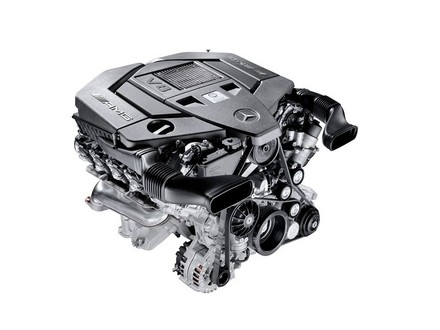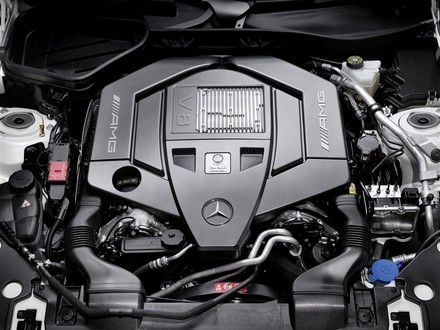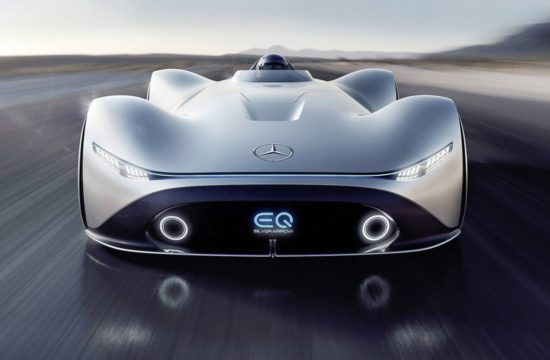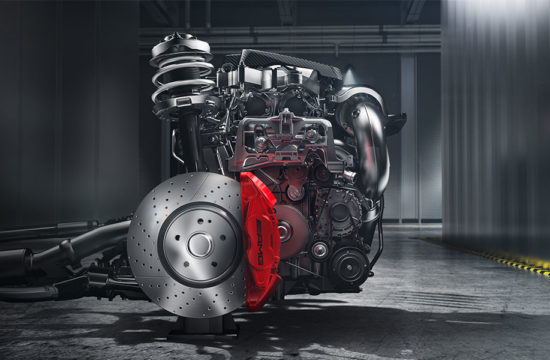
Following yesterday’s reports on the new naturally aspirated V8 AMG has made for the next SLK55 AMG, Mercedes released official details of this 5.5 liter engine.
It is basically the same as the 5.5 liter biturbo they are using for the full-fat AMG models like the CLS63, or S63. But it is naturally aspirated and therefore weaker at 310 kW (422 hp) and 540 Nm of torque. That is still a very decent amount of power. The main focus however, is on fuel efficiency.
That’s why the 5.5 liter V8 features direct petrol injection and even an advanced cylinder deactivation system. AMG says it is 30 percent more economical than the existing AMG engines with fuel consumption of 8.5 litres per 100 km. It is also 3.5 liter better than the old SLK55 which had way less horsepower. CO2 figure for this engine is 199 grams per kilometre.

It is of course the cylinder deactivation system in this engine that’s steal the show a bit. The idea is when you are driving at slow speed and don’t really need all that power, this intelligent system – derived from Formula 1 – shuts down four of the cylinders. You still has 230 Nm of torque from the other four but using much less fuel. When you open the taps the other four burst into life again and off you go.
Here’s a more detailed explanation of the system:
AMG Cylinder Management
It is the AMG Cylinder Management cylinder shut-off system in particular, completely newly developed by Mercedes-AMG, which significantly improves efficiency: cylinders two, three, five and eight are cut off under partial load, which considerably lowers fuel consumption. In similar form this technology is also used in the approx. 750 hp V8 engines used in Formula 1. As efficiency also plays a major role at the pinnacle of motor racing, two or four of the eight cylinders are cut off e.g. when cornering at slow speed, in the Safety Car phases or for pit stops. With a fuel consumption of 8.5 litres per 100 km and CO2 emissions of 199 grams per kilometre (NEDC combined, provisional figures), the naturally aspirated AMG V8 engine comes in at or below the level of its competitors, however these are unable to match either the output or torque of the SLK 55 AMG – and above all, they do not use large-displacement eight-cylinder engines.
The cylinder shut-off function is available over a wide engine speed range from 800 to 3600 rpm if the driver has selected transmission mode “C” – Controlled Efficiency. The AMG main menu in the instrument cluster informs the driver whether cylinder shut-off is active, and whether the engine is currently running in four or eight-cylinder mode. No less than 230 newton metres of torque is still available in four-cylinder mode – enough power to ensure plenty of acceleration in most driving situations. As soon as the driver has a need for more power and leaves the partial load range, cylinders two, three, five and eight are activated. The switch from four to eight-cylinder operation is immediate and imperceptible, leading to no loss of occupant comfort whatever. At an engine speed of 3600 rpm the activation process takes no more than 30 milliseconds.

-
weight-optimised cast aluminium pistons with special piston skirt coating
-
special ventilation holes in the crankcase
-
oil pump with electrically controlled pressure stage
-
separate oil pump for cylinder shut-off as a controllable, low-friction vane cell pump
-
engine cooling on the particularly efficient cross-flow principle
-
electronically controlled fuel pressure, fully variable and demand-related between 100 and 200 bar








